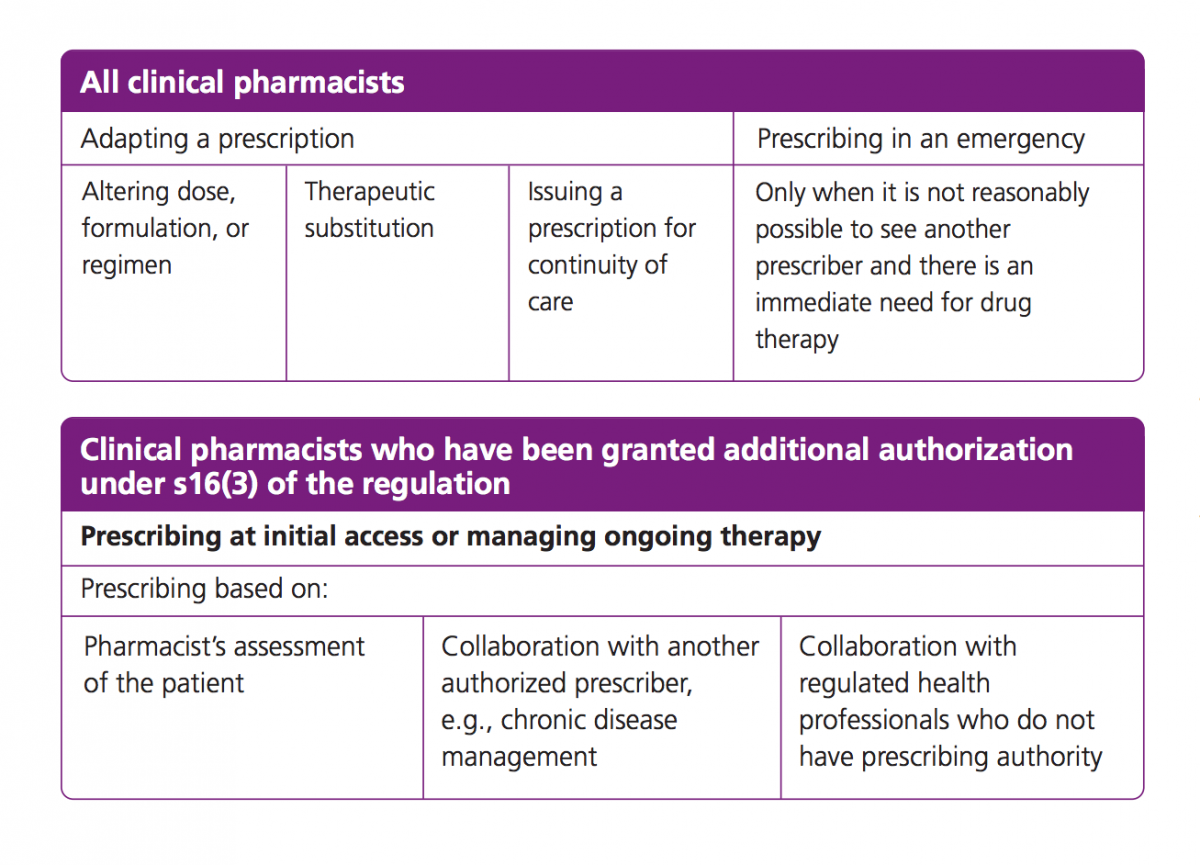

What is the difference between adapting a prescription, and when an adaptation would require additional prescribing authorization?
ACP pharmacy practice consultants get the opportunity to see a lot of good work happening when they visit pharmacies across Alberta. But, from time to time, they see some pharmacists who are a bit confused by the differentiation between adapting a prescription, and when an adaptation would require additional prescribing authorization. For pharmacists without additional prescribing authorization, adapting pre-existing prescriptions simply isn’t within their scope of practice.
“In general, pharmacists are doing what they believe is in the best interest of the patient,” said ACP pharmacy practice consultant Chantal Lambert. “Unfortunately, sometimes pharmacists without additional prescribing authorization step beyond what the scope of a renewal or adaptation is.”
Without additional prescribing authorization, pharmacists can renew prescriptions as they were originally written and are currently being taken, or adapt new prescriptions when they are being filled for the first time. Any licensed pharmacist in Alberta can perform these functions.
Examples
Some examples of unauthorized renewals or adaptations seen in pharmacies include:
- Adjustment of instructions for a renewal based on the patient’s current dosage (for example, a patient is verbally authorized by their physician to titrate the dosage upwards and is now taking a larger dose than originally prescribed)
- Renewal of an inactive prescription for a different dose of medication due to tolerance issues or request of a patient (for example, renewing the old lower dosage prescription of antidepressants because the patient is having difficulty tolerating new dose and the patient requests the old dose)
- Renewal of a medication that hasn’t been taken for an extended period of time (for example, renewing allergy eye drops that the patient hasn’t used in three years)
- Adapting a prescription after initial fill to an alternate due to tolerance issues (for example, switching to a different antibiotic as the original prescribed is causing nausea and vomiting)
All of the examples above would be considered managing ongoing patient care or initial access prescribing and can only be performed by a pharmacist with additional prescribing authorization.
For a refresher on the standards of practice for adapting a prescription, review standards 11 and 12 of the Standards of Practice for Pharmacists and Pharmacy Technicians.





